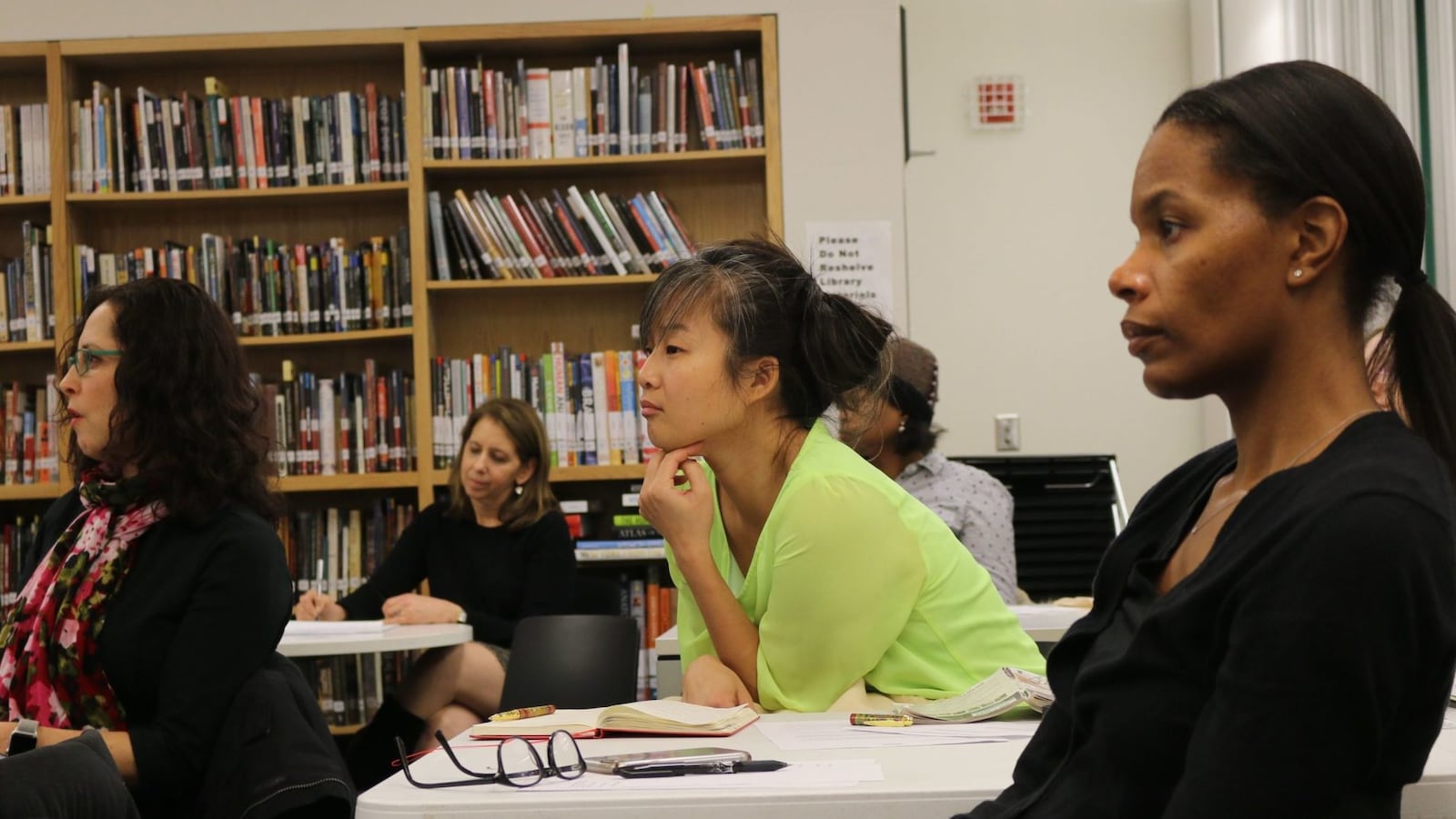In Manhattan’s vast District 2, students can choose which middle schools to apply to — but many of the schools get to choose which students to accept. As a result, some schools wind up with many high-achieving, privileged students, while others serve many needy, struggling students.
One parent has a plan to fix that: Require each middle school in the district, which stretches from Lower Manhattan through Chinatown to the Upper East Side, to enroll a mix of struggling, average, and high-achieving students. Shino Tanikawa, a member of the district’s Community Education Council, presented her idea at a committee meeting on Wednesday.
“We need an admissions system that does not judge students or value some students more than others,” she said.
Tanikawa is part of a small but growing group of advocates across the city who are trying to combat segregation by reforming how students are assigned to schools — a grassroots effort that the de Blasio administration has encouraged and, in one district, turned into official policy.
But the administration has so far only been willing to act on plans that have local support. That could present a challenge for Tanikawa’s proposal in District 2, where parents are used to competing for spots at selective middle schools. While most families support classroom diversity in theory, many also want their own children surrounded by students with similar skill levels.
“There is research that shows that just as some kids at the lower end need support,” said Debra Freeman, a parent at Wednesday’s meeting, “there are kids who are at a higher end who will be very bored and can have issues if they’re not sufficiently challenged.”
District 2 families can enroll at middle schools near where they live, or apply to others across the district. Eighteen programs at the district’s 24 middle schools are “screened,” meaning they rank applicants based on factors including test scores, grades, interviews and other factors. Most schools consider students’ attendance records in admissions decisions — a screen the education council has proposed to eliminate based on research showing that poor students are more likely to miss school.
Critics say that screening applicants by ability exacerbates school segregation, since academic achievement is closely linked to students’ socioeconomic status. In District 2, schools are largely divided along race and class lines: Among schools with middle-school grades, the student-poverty rate ranges from a high of 70 percent to a low of 3 percent, according to data collected by Tanikawa.
“These are public schools,” said Robin Broshi, a member of the education council who supports the proposal to mix students with different academic abilities. “There’s no reason why one segment of a population should have a systematic advantage over another segment of the population to public schools.”
Tanikawa’s plan is based on the so-called educational option, or “ed opt,” admissions system used by some of the city’s high schools. Designed to promote integration, schools using that model aim to enroll students along a range of different academic levels. However, many have struggled to attract enough high performers because they compete for those students with the most selective schools.
To prevent the same thing from happening in District 2, Tanikawa’s plan calls for all the middle schools to use the ed-opt model. Tanikawa said the district should also adopt recruitment practices to attract a diverse mix of applicants to each school, and better ways to share information about schools with parents. She would pair those changes with efforts to attract more teachers of color to the district and ensure that classroom instruction reflects all cultures.
But getting families to apply to middle schools that currently serve more needy students is likely to be an uphill battle, with a school’s selectivity often equated with its quality. Parents who listened to Tanikawa’s proposal said that some of the district’s middle schools offer advanced courses and are known for sending students to elite high schools — while others are not.
“Work has to be done around these middle schools because there are disparities,” said Tunisia K. Riley, a parent in the district.
Other districts that have tried to adjust their middle-school admissions policies to promote integration have faced pushback.
When the superintendent in neighboring District 3 floated a plan to integrate Upper West Side middle schools by reserving some seats for low-income students, some parents rebelled and the idea was shelved. An outcry also ensued at Medgar Evers College Preparatory School in Brooklyn when the education department changed admissions there. Parents at the elite school worried academics there would “deteriorate.”
In District 2, a final plan is still a long ways off.
Tanikawa intends to recruit parents, principals and district leaders to come up with specifics for the proposal. While the education council does not have the power to enact it, Tanikawa hopes that if it garners enough local support, the city will make good on its promise to back local integration efforts and sign off on the plan.
That is what happened in District 1, which includes the East Village and Lower East Side. After years of advocacy, parent leaders won city approval for a new admissions system designed to make the district’s elementary schools more diverse. It will be in place for the upcoming school year.
“I’m hoping people will have the courage to change the system in a meaningful way,” Tanikawa said.


